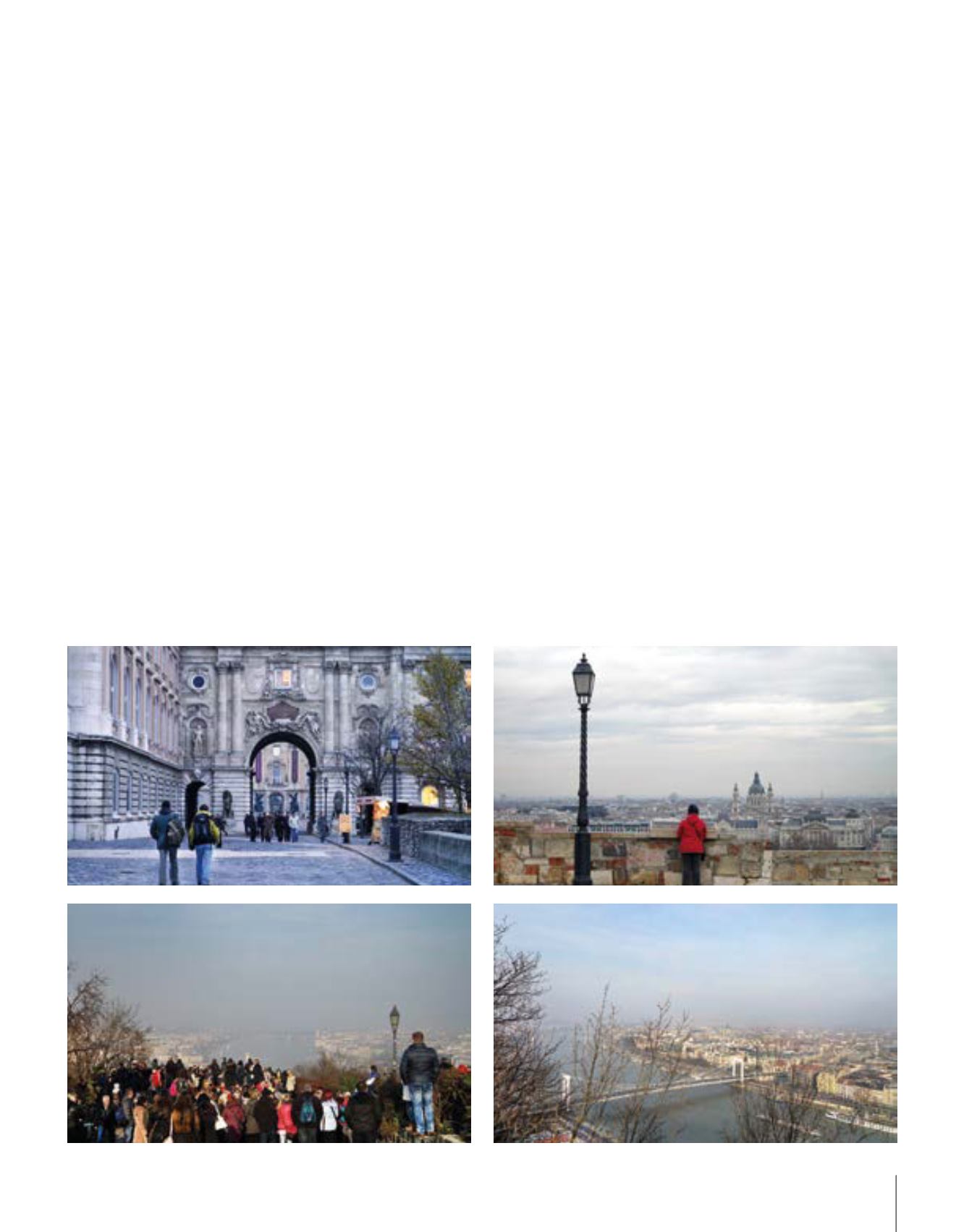
111
yapı olan köprülerini adeta
birer mücevher gibi taşıyor.
İlk hedefimiz bu köprülerin en
meşhuru.
Zincirli Köprü
Buda tarafına geçen, en eski
ve en ünlü köprü. 1839–1849
yılları arasında yapılmış olan
nam-ı diğer “Aslanlı Köprü”nün
Macarcası Szechenyl Lanchid.
Diğerleri gibi bu köprü de
2.Dünya Savaşı sırasında
büyük hasar almış ve iki
tarafındaki aslan heykelleri
dışında tamamen yıkılmış.
Gündüz hantal bir görüntüsü
olsa da gün batımında ışıklar
açıldığında muhteşem bir
manzara ortaya çıkıyor. Bu
yüzden şehri tanıtan tüm
broşürlerde, bu köprünün
gece ışıklandırılmış halini
görmek sürpriz değil. Bir
de şehir efsanesi var tabi.
Köprünün mimarı İngiliz
William Clark, Lanchid’de
bir hata bulunsa, kendini
öldüreceğini iddia eder.
Gerçekten de açılıştan sonra
köprüde hiçbir mimari ve statik
hata bulunamaz. Bir şey hariç.
Heykelleri yapan heykeltıraş,
aslanların dillerini yapmayı
unutmuştur. Kalabalıktan
bir çocuk, aslanların dillerini
yutup yutmadıklarını sorar.
Bunun üzerine, mimarın
sözlerini hatırlayan heykeltıraş
o utançla köprüden Tuna
Nehri’ne atlayarak intihar
eder. Zincirli Köprü Peşte
yakasında günümüzde
beş yıldızlı bir zincir otel
olan Gresham Sarayı’nın
bulunduğu meydanı Buda
yakasındaki -ismini köprünün
mimarından alan- Clark Adam
Meydanı’na bağlıyor. Burada
şehrin resmi merkezi olan
“sıfır kilometre taşı” ve hemen
sağında sizi tepeye çıkaracak
olan funikülerin terminalini
bulacaksınız. İyi seyirler.
Buda Kalesi
Funikülerde ilk vagonu tercih
edenler arkalarında adım
Museum and the Hungarian
National Gallery; on the right
is the Fisherman’s Bastian
with a spectacular view of the
Danube and a panoramic view
of the city and behind it is the
Matthias Church. The National
Gallery is the place for starting
museum visits. It houses a
wide range of collections from
the Medieval Age to the 20th
century. It is both spacious and
has an extraordinary sight from
its windows. Behind the palace,
the Matthias Fountain depicting
King Matthias and his lover, on
the other side there is the statue
of Prince Eugene of Savoy of
Austrian-Hungarian Empire
who won a victory against the
Ottoman Empire.
Fisherman’s Bastian,
“Halaszbastya” is worth the visit
with its 7 fairytale-like towers
on the city walls, resembling
sand castles. Remarkable.
Just behind it another iconic
structure, the Matthias Church.
What makes it interesting for the
Turkish is the story that Ottoman
Sultan Suleiman prayed here
and converted it into a mosque
after conquering city. Under
the castle region, in large area,
there are the labyrinth caves,
secret passages of the castle,
which used to be partially open
for public visit until 2011. Even if
the labyrinth is closed for visit,
the wine cellar with stone vaults
is still open for business. It is
the right address to taste great
Hungarian wines and meet the
local drink “palinka”. I must
mention that this venue is on
the top of the to-do list of the
travelers visiting Budapest.
The other hill, Gellert
Another hill promising a great
view on the Buda side is Gellert
Hegy. On the skirts of the hill,
there is the Gellert Bath. There
is long climb up. You can hit the
road either from the winding
road overlooking the castle or
the road through the park. The
road ends at the castle and the
on the top Szabadsag Szobor,
the Liberty Statue. Though the
climb is challenging, it is worth
the effort. The Liberty Statue, a
woman holding a palm leaf in
her hand, is 26 meters in height
and was built in 1947. It was first
built for the Soviets saving (!)
Hungary from the WW2 but with


